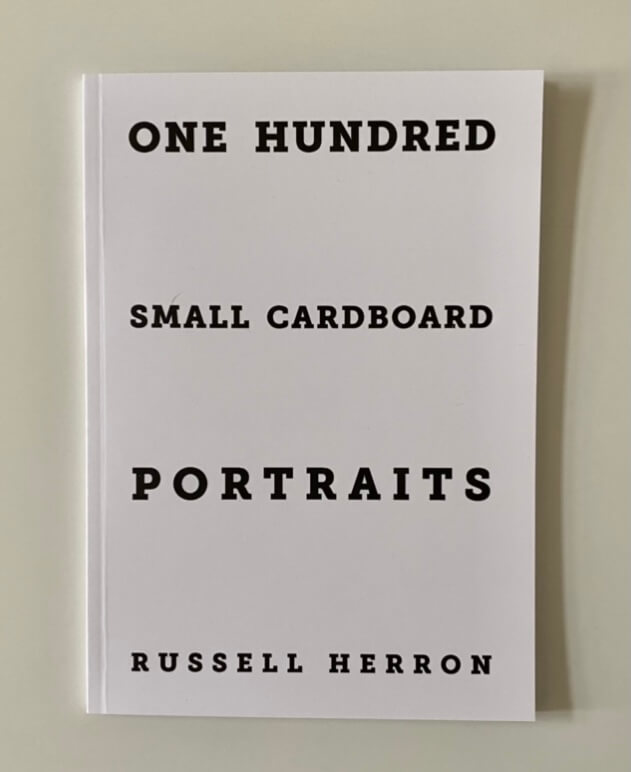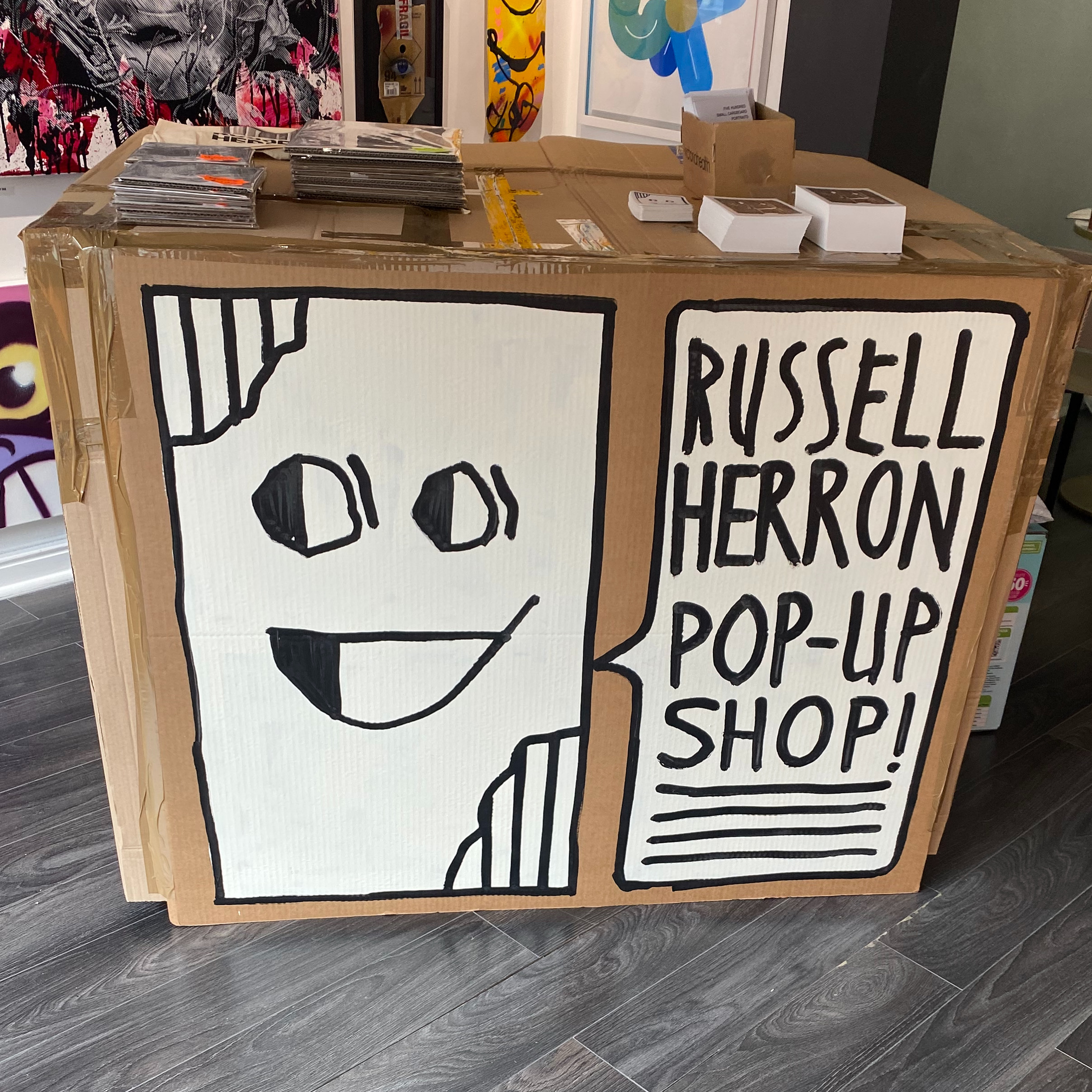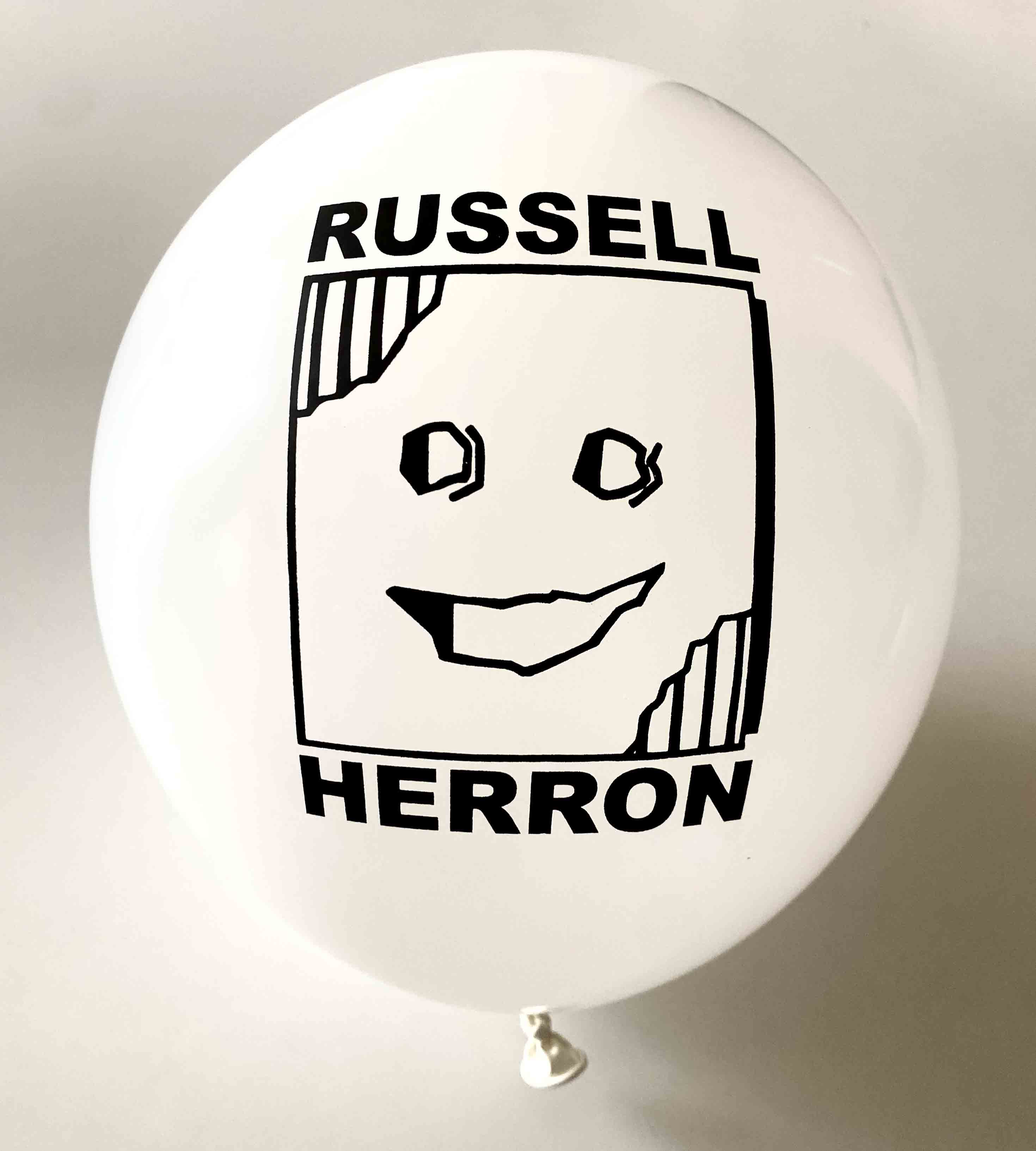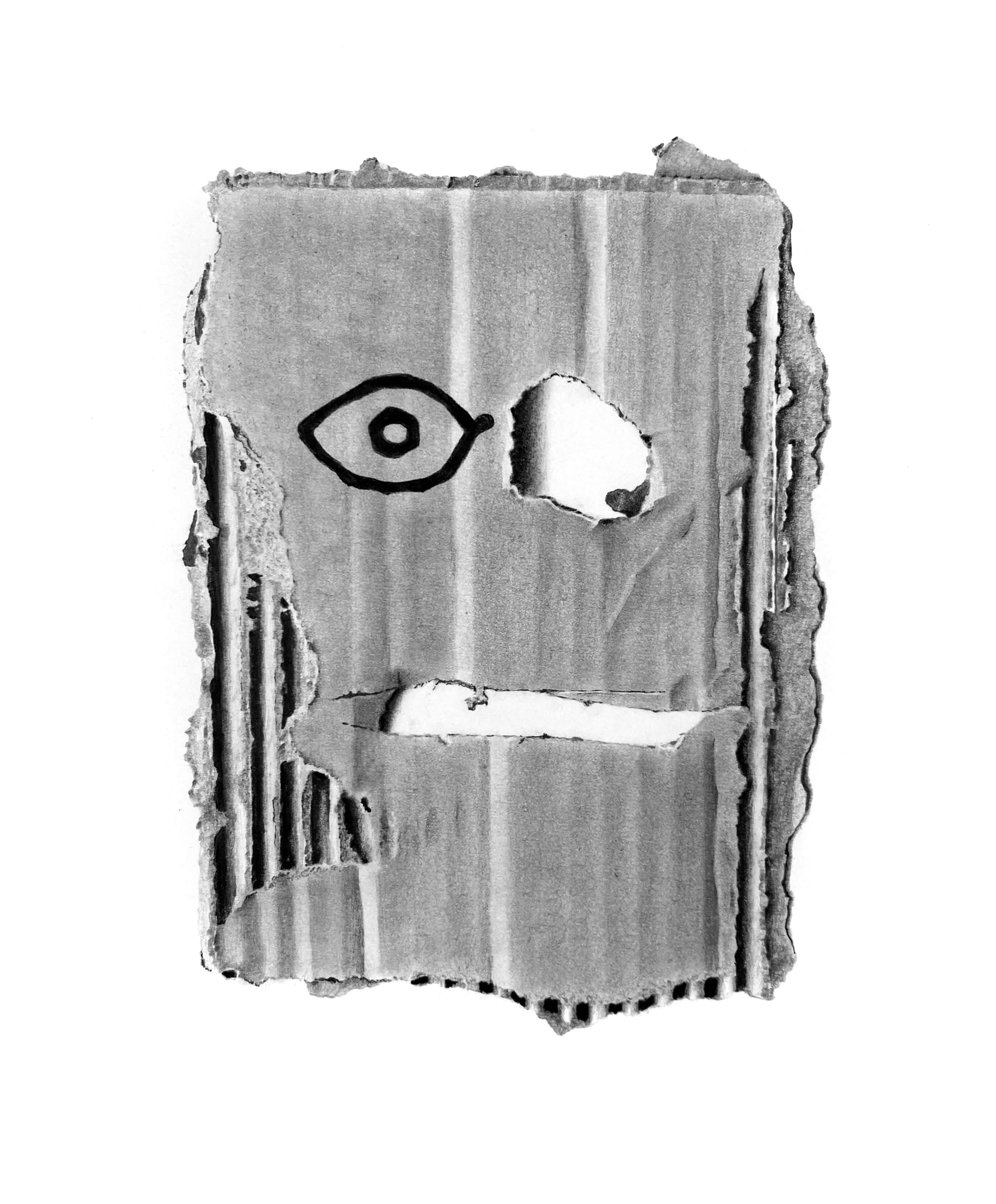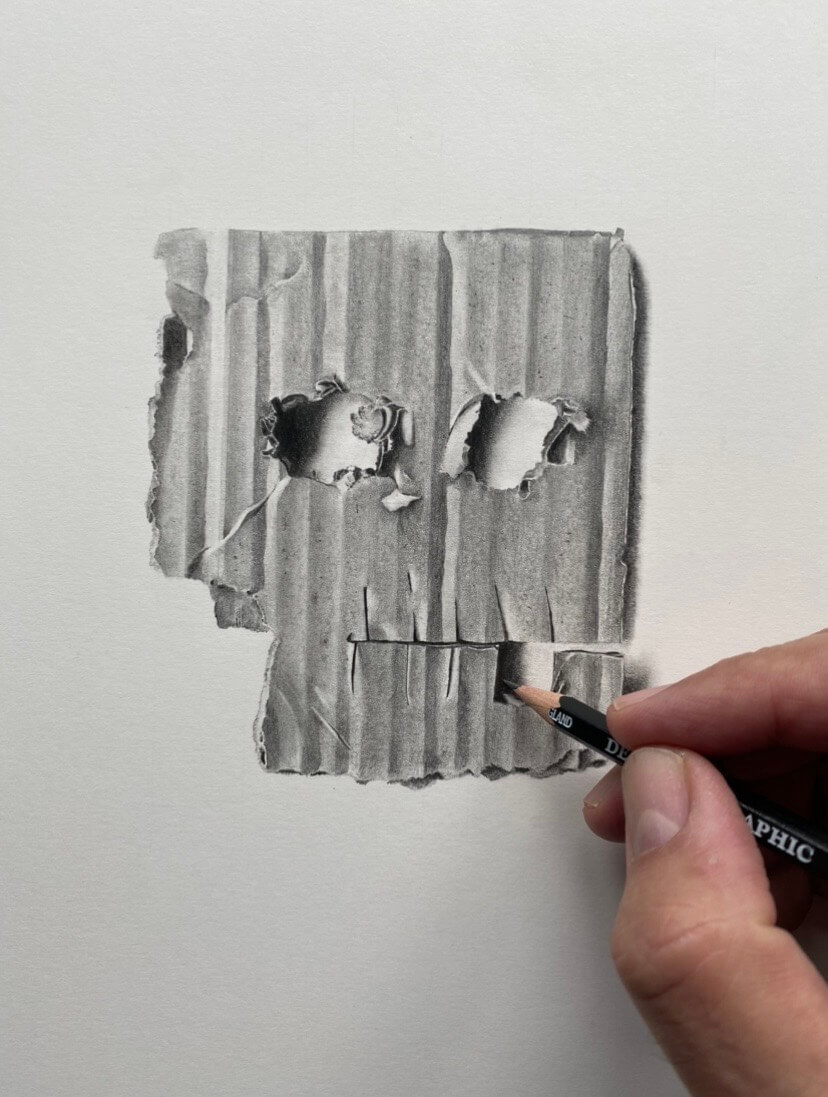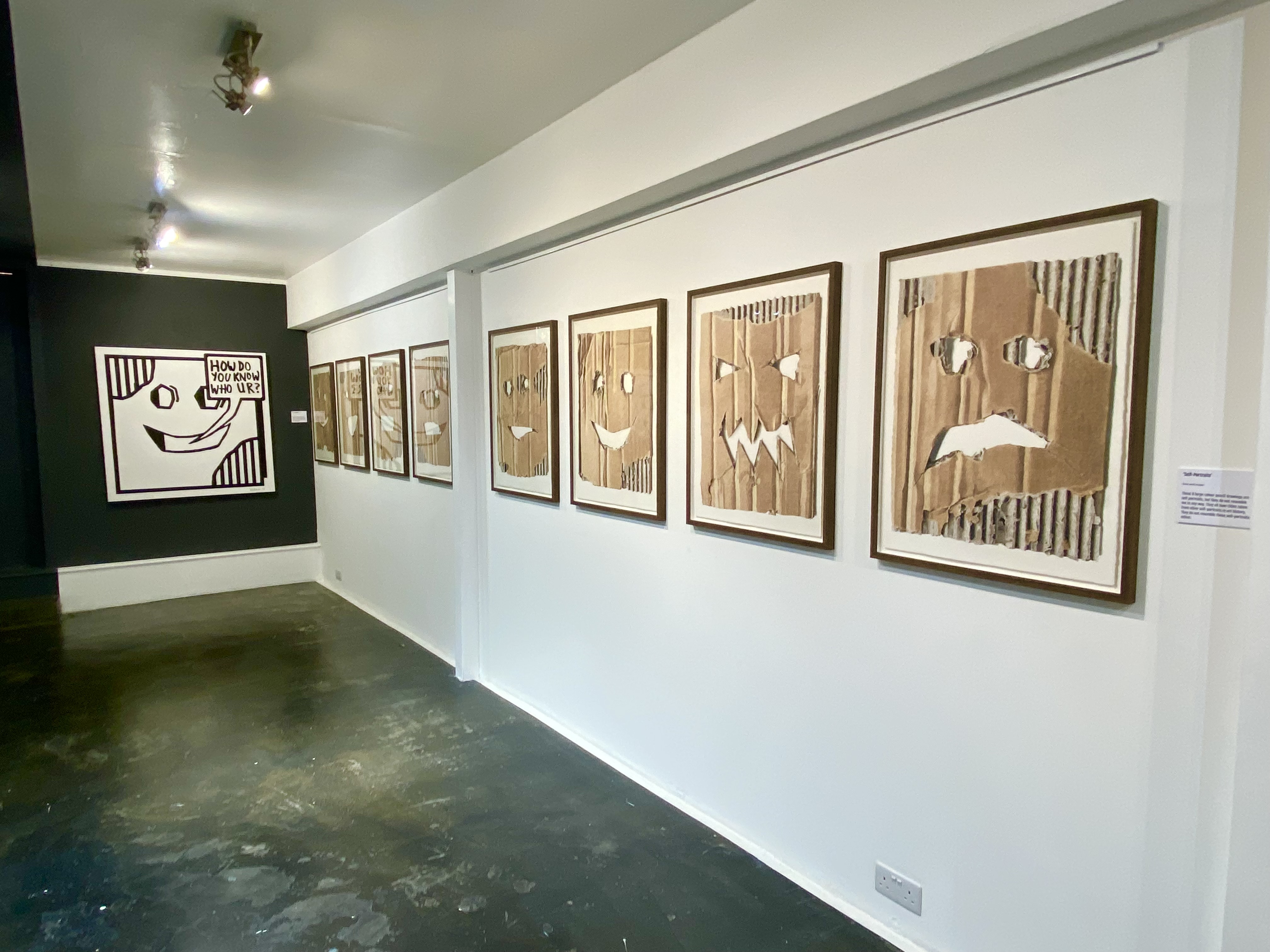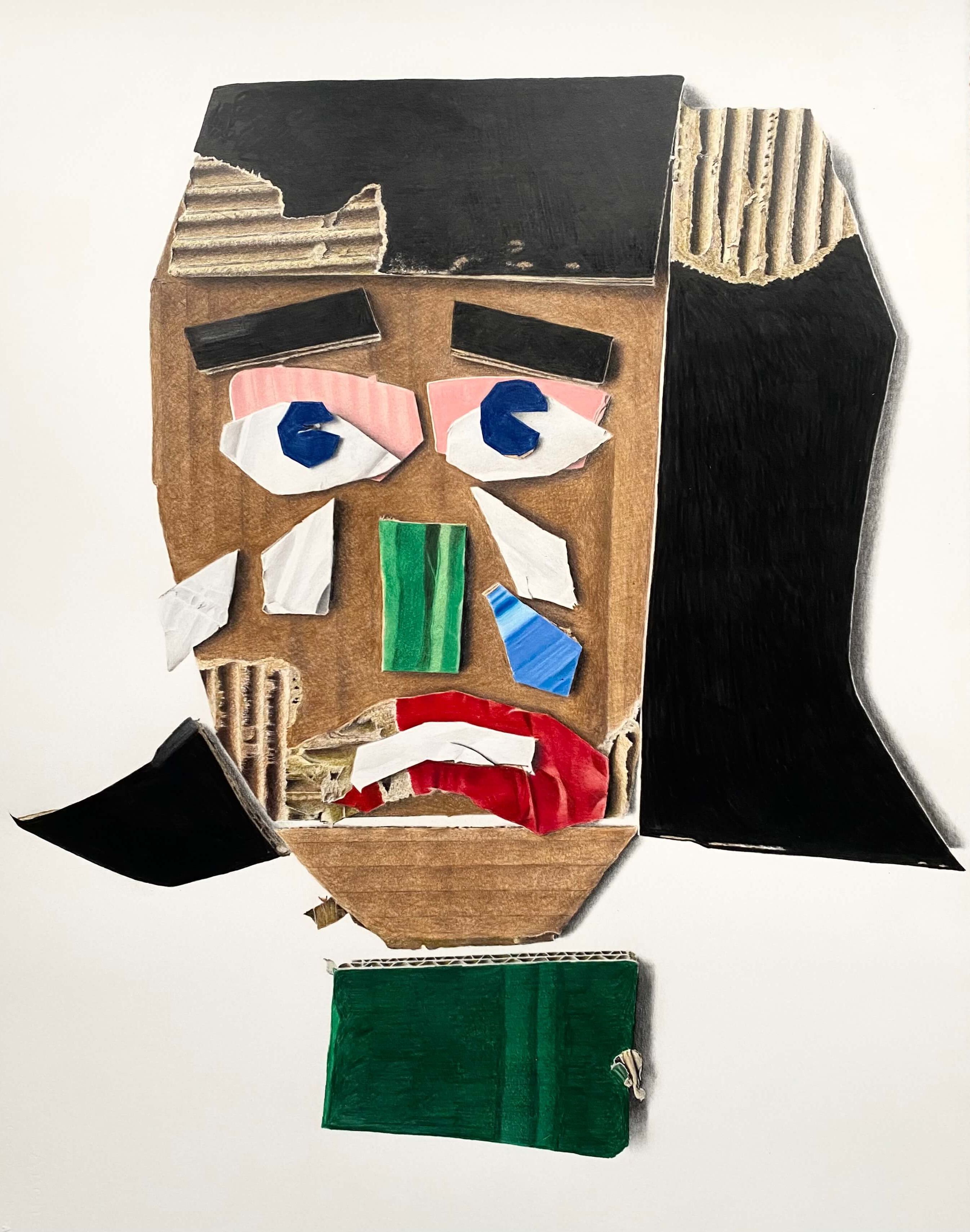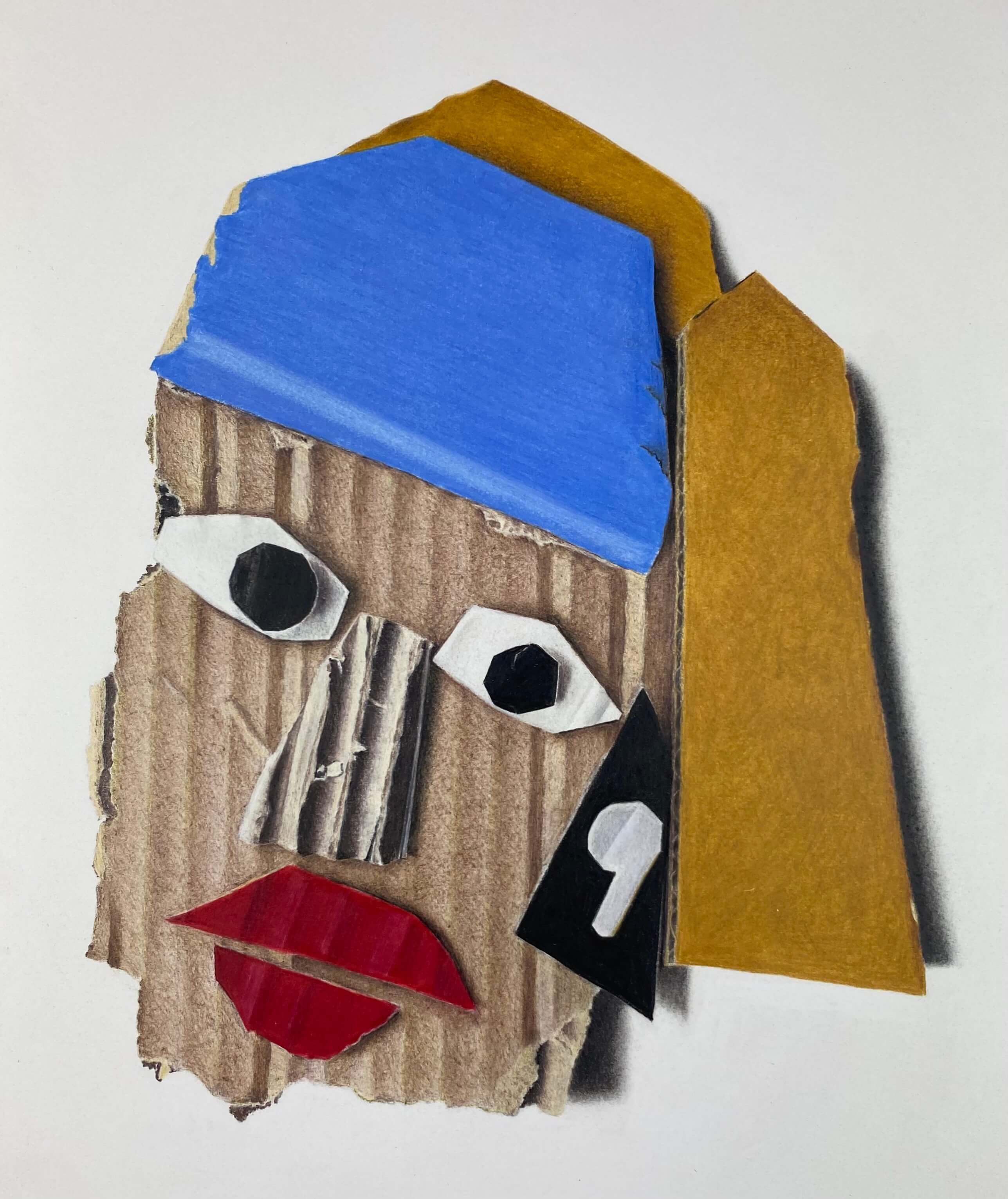RUSSELL HERRON
Russell Herron creates realistic pencil drawings of cardboard faces that explore identity without relying on likeness or history. Frequently known as “the cardboard guy”, his work over the last six years has included hundreds of portraits, a pop-up shop, branded merchandise and 15-second artist videos. With prices ranging from free stickers to £3,000 framed drawings, Russell Herron invites everyone into his world. His practice explores what it means to take up space as an artist, and how visibility, branding and repetition all play a role in building a cultural presence.
CONVERSATION
Current Work
How would you describe your artistic practice in a few words?
People know me as “the cardboard guy” now, and I’m totally fine with that. It was not something I planned, but I’ve worked with drawing cardboard for the past six years and it has gone really well. People respond to it, it sells, and it has led to lots of group – and solo - shows.
If I had to describe what I do, I would say I am interested in portraiture and self-portraiture, and in what it means to occupy space as an artist. I think about how artists take up space in the culture, both physically and conceptually. Making work is a way for me to define that space while also trying to understand it. I don’t think I have reached an answer, but the question keeps me going.
What themes or ideas are central to your work right now?
The cardboard portraits started during my 2018 open studios. I had been making large A1 pencil portraits of artists, but I thought no one was going to buy those, so I made some smaller drawings: a water glass, a flower and one of a torn piece of cardboard. That piece of cardboard sold straight away. Someone else wanted one too, so I drew another. This time I added two eyes and a mouth.
I don’t know why I did that. But once I had, I thought this is still a portrait, but it’s not weighed down by likeness or history. That opened everything up. Since then, I have made hundreds of these faces. I see them as a giant self-portrait because they come from everything I’ve ever seen and absorbed: from comics, cartoons, films, art, tv, photography, magazines, portraits, from everywhere.
There is a kind of image soup in my head, and the cardboard is where it comes out. That is why it still feels exciting to make them. They are familiar, but open-ended. We all carry that visual soup around, and I just pour mine into cardboard.
Are there any projects or exhibitions you're currently working on that you’re excited about?
I am doing the Art Car Boot Fair again in September, which is a great because I’m making lots of new stuff for that. I am also just finishing the design of a book collecting together 500 Small Cardboard Portraits. That series is complete, but I will keep drawing more portraits, in different sizes and styles.
At my most recent solo show at BSMT, I turned the front room into a pop-up shop. We had drawings for £200, others for £100, cardboard heads for a tenner, plus postcards, stickers and balloons you could take for free. I like that mix. It opens up more ways for people to get involved.
Anything that inspires you in particular?
I have always been interested in how branding and business work. Artists like Damien Hirst and Andy Warhol are interesting because they approach art as a business. There is something compelling about producing at scale and offering lots of different ways for people to engage.
I am also drawn to how commercial environments operate, like gift shops in big museums. I once thought, what if you had a gift shop without the museum? What would it be like to produce the merchandise but without the body of work? That idea has always stayed with me and still shapes how I produce my own work.
Exploring your identity
How would you define your visual or brand identity?
My identity has changed over time. Between 2005 and 2008, I made a lot of work using my name in different formats. One example was creating images that looked like fashion adverts, black and white photos with “Russell Herron” placed underneath, in the same way you would see a designer label. There was no explanation. People did not know if the name referred to the person in the picture, the photographer or a brand. That ambiguity was part of the work.
Now I still make those kinds of things, but I no longer treat them as commentary. I just put them into the world as part of the overall experience. It is still about making space and being seen, but more through action than explanation.
Are there particular values, moods, or stories you aim to convey through how you present your work?
Accessibility is really important. I like offering multiple ways for people to connect with the work, from something free to something expensive. That range feels democratic to me. Cardboard helps with that. It’s a simple material we see every day.
How you bring your artistic identity to life
How do you express your identity through your work's presentation?
At BSMT, I showed £3,000 colour pencil drawings right next to £10 signed cardboard pieces. There were free balloons and stickers too. I like the idea that someone could walk away with something, even if they did not buy anything.
Have any of those elements become signature to your practice?
Definitely the cardboard portraits. But also the idea of offering different price points and ways of engaging.
Looking ahead
What’s your next big focus or direction?
The cardboard project still feels wide open. There are always more faces to make and new ways to draw them. I have finished the first 500 small portraits and I am working on a book collecting them. But I will keep going. Portraiture is still the core of what I am exploring.
I have also been making 15-second portrait videos of artists I meet. It is a reduction of Warhol’s 15 minutes of fame. These videos are about the connections we make and the network we exist in as artists. I like making work about, or reflecting, the artworld. Making art in the gaps between art and artists and galleries. The portraits only exist online. Social media is sort of the medium itself.
Is there something you’d love to do more of creatively or in how you present your work?
I would like to do more pop-up shops. I’ve been thinking about the shop Tracey Emin and Sarah Lucas opened in 1993. It has become part of art world mythology. It was quick, messy and brilliant. I like that kind of energy. I would love to do something similar today, maybe invite a few other artists in and run it for a week. It doesn’t need to be polished. I am always looking for ways to keep making and keep things moving, keep broadening out what I’m doing. There’s loads of things I want to do.
published in August 2025
www.russellherron.cominstagram
